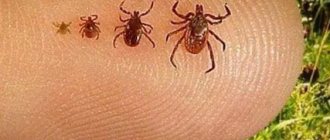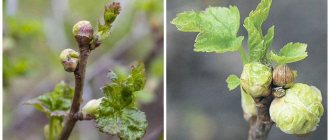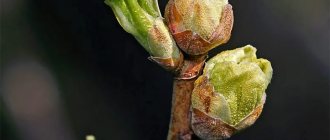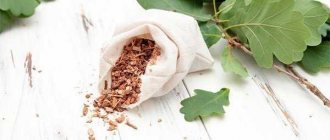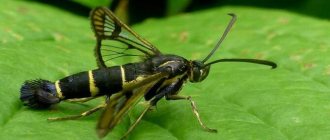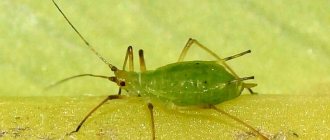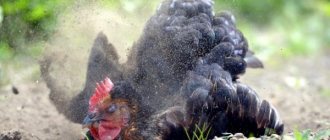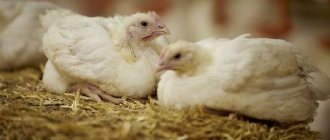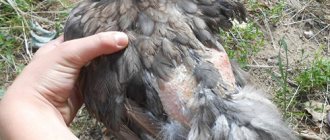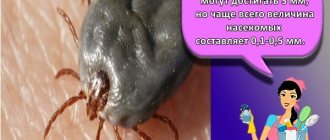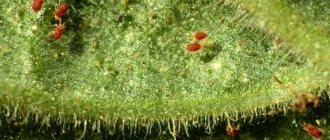Home Tips for summer residents
Almost every summer resident has currant bushes, but it is rarely possible to grow a rich harvest and keep the foliage healthy. The bud mite is the most common pest that attacks currants. It sucks the juice from the leaves, the bush begins to hurt and bears fruit poorly. But there are 9 effective ways to get rid of this mite without harming the plant, which even a novice gardener can handle.
- 2 Use a gas burner
- 3 Laundry soap
- 4 Planting onions and garlic
- 5 Mixture of ash and tobacco
- 6 Walnut leaves
- 7 Remove affected buds
- 8 Pour boiling water over the bush
- 9 Use chemicals
Onion and garlic infusion
The kidney mite cannot tolerate the smell of garlic or onions, so to combat the pest, you can prepare a tincture according to the following recipe:
- take 100 g of peeled onion and garlic, chop on a fine grater;
- put the pulp in a 10 liter bucket of water;
- mix everything thoroughly until smooth, cover with a lid and leave for a day;
- strain the infusion through doubled gauze.
Spray the foliage, branches and tree trunks with the prepared solution, starting in early spring. This will destroy the larvae that survived the winter.
This garlic and onion infusion is also effective against aphids and herbivorous caterpillars.
Use of pesticides
The fight against bud mites on currants in the spring can be done with the help of chemicals intended for treating shrubs. Since parasites belong to arachnids, insectoacaricidal or acaricidal preparations are used to combat them. It is worth remembering that incorrect use of chemicals can negatively affect your health. Therefore it is required:
- when processing the garden in autumn and spring, alternate medications to avoid addiction;
- carry out processing according to the instructions;
- When using the product, protect your skin and eyes with gloves and goggles.
Shrub treatment should be carried out at the most unfavorable time for ticks - during the migration of larvae. At the stage of bud opening, the larvae move out into the open space; this movement lasts about 20 days. It is during this period that currant bushes should be treated.
To destroy mites on black currants, use the following acaricidal agents:
- Kontos;
- Akketelik;
- Vertimek;
- Nissan;
- Endidor.
The second stage of garden processing occurs after harvesting; stronger means are used for this:
- Nitrafen;
- Sun Mite;
- Phosfamide;
- Rogor-S;
- Bi-58.
Use a gas burner
Another effective method is fire treatment. You need to point the gas burner at the bush, keeping a distance of 10 cm from the branches. Movements should be fast so as not to burn the bush, and directed from top to bottom.
Healthy buds have dense scales that protect them from fire. Buds affected by pests, on the contrary, are open and porous, so the heat will penetrate inside and destroy the bud mite along with the larvae.
How does the currant bud mite develop?
Fertilized females wait out the winter in their buds, which allows them to protect themselves from frost and other adverse weather conditions.
Spider mites on currants begin to actively lay eggs when temperatures reach 5 degrees Celsius. A female can lay 7-8 thousand eggs at a time, one kidney can accommodate 4-7 thousand individuals, which causes it to swell to a round size. The development of the larva inside the egg continues for up to two weeks; after the bud breaks during the flowering period, the parasites begin to feed.
The mite on black currant sucks out all the juice of young shoots, which leads to the death of the plant that has not yet blossomed. Larvae and females migrate within 30 days, this period usually occurs when the plant is flowering.
The problem will be visible to the naked eye. Relocation of pests to other shrubs occurs with the help of rain, clothing and wind; control methods are selected depending on the flowering period.
The currant bud mite is one of the harmful parasites for garden and berry crops. A female can reproduce up to five generations in one year, which is equal to about 30,000 individuals. Over time, they adapt to bad weather conditions, which makes them more resilient. If preventive measures are not taken in advance, the bush dies in one season.
Most often, the bud mite infects the bud of a currant bush. In terms of external signs, the affected kidneys differ from healthy ones by visible deformation; they enlarge and take on the shape of a pea. In autumn you can notice two types of buds on the currant bush:
- Patients look like a small head of cabbage, the kidneys are enlarged and round. A large number of female ticks causes the buds to swell to enormous sizes; with the onset of warm weather, they multiply.
- Healthy buds have an oblong, round shape with closed scales.
You may also notice the following changes:
- The bud stops developing, the stems become disheveled, which indicates a viral infection of the bush, which could have been infected by a parasite. In this case, the plant cannot be treated, it soon dies.
- The surface of the leaf blade becomes rough, deformation is observed, and the color becomes pale.
- The upper young shoots change their color, brightness and size.
Such signs are observed in the spring and summer.
Laundry soap
Soap can destroy kidney mites due to its high alkali content.
Preparation of soap solution:
- rub 200 g of soap, dissolve in 0.5 liters of water and leave overnight;
- In the morning, add 150 ml of sunflower oil to the mass, stir until smooth;
- Dissolve the resulting mixture in 10 liters of water, pour it into a sprayer and begin processing the bushes.
Spraying should be started within an hour after the final stage of preparing the solution. Later, the soap emulsion will begin to separate.
Mr. Summer Resident recommends: mite-resistant currant varieties
Breeders have developed currant varieties resistant to bud mite:
| Name | Ripening time | Description |
| curiosity | Early ripening | It is characterized by high yield and resistance to frost. Needs frequent watering. The berries are oval, sweetish-sour with a thick skin. |
| Selechenskaya | Frost-resistant and drought-resistant. The fruits are large, glossy, black, sweet, with thin skin, weighing up to 5 g. | |
| Kipiana | Mid-late | The berries are black, medium-sized, sweetish-sour. |
| Vigorous | Late ripening | The fruits are oval, large (weighing up to 8 g), refreshingly sour. Needs systematic pruning. |
Pour boiling water over the bush
This method is similar to treating bushes with a gas burner, but in this case boiling water is used.
The process of destroying the kidney mite is as follows. Tie the bush branches into a bundle with twine, without squeezing them too tightly. Pour boiling water into a watering can with a sprayer, then raise the watering can 2 cm from the top of the bush and water the branches.
This treatment should be carried out in early spring before the buds open. On average, one bush should require a whole bucket of water.
Signs of pest damage
At different times of the year, seasonal signs of infection can be recognized on currants.
In spring and summer
The leaves of annual shoots acquire light shades, their surface becomes rougher, and at the top they become smaller and curly. Shoot growth stops. Multiple thin shoots of a reddish color appear, similar in shape to a broom, which do not bloom or bear fruit, but consume a lot of nutrients and gradually deplete the plant. The etiology of this pathological process is fungal or viral invasion.
The disease is incurable and eventually the currant bush dies. The currant mite is the carrier of pathogenic microflora.
in autumn
The buds affected by the mite increase in volume, as if they are swollen, and look like a torn head of cabbage. They contain thousands of females, ready to lay eggs with the onset of spring.
Fighting methods
Chemicals
Such products are not on the list of favorites among summer residents, but they are very effective in the fight against parasites. However, they are very toxic, which can cause harm to humans, as well as beneficial insects and pets. In view of this, it is necessary to strictly follow safety regulations and act strictly according to the instructions.
Chemicals such as colloidal sulfur, acaricides, including the drugs “Neoron”, “Oberon” and “Nissoran”, as well as an insectoacaricide such as “Fufanon” have proven to be most effective in controlling pests.
Biological agents
Such drugs are more in demand because they are highly effective and at the same time do not harm either humans or the environment. The components of such drugs most often include fungal strains and bacteria.
Among all the products, experienced gardeners recommend Akarin, Fitoverm, Bicol, Boverin and Bitoxibacillin the most.
Treatment with these preparations is recommended before the flowers begin to appear. It would be best to start it a second time only after picking the berries.
Shrubs must be processed at temperatures above +15 degrees. If the weather is too windy or low temperatures are observed, then the plant will not benefit from treatment during this period.
When using medications, we strongly recommend that you strictly follow the instructions on the packaging. In addition, it is recommended to use different preparations several times for treatment, be sure to check them for biocompatibility before use.
Folk remedies
Such methods will be especially effective in combination with chemical or biological methods, and also if you begin treatment with parasites in early spring.
All folk remedies can be made with your own hands at home. To create solutions, components such as onion peels, tobacco, garlic or young green walnut shells are required.
For successful pest control, you can also plant plants such as onions or garlic near the currants. They are good at repelling pests. But we note that you should not eat such plants, especially if you have treated your plantings with chemicals.
To protect the bush, you can also make a solution, the preparation of which will require 10 liters of water, 10 grams of colloidal sulfur and 75 grams of Karbofos. All this must be mixed well.
Physical measures
This method is suitable only for those who are especially patient and only for early spring. It involves a thorough examination of the branches of the bush, as well as the removal of diseased buds. If there are more than 5 of them on a branch, then it should be cut off and burned along with the buds.
Also, try not to use too much chemicals. Then beneficial insects such as ladybug, encarsia, lacewing, hoverfly, chalcid and others will be able to help you in the fight against pests. They readily eat kidney mites. However, if you use a large amount of pesticides, you risk scaring away all the natural helpers from the plant.
Agrotechnical methods
These methods do not have a high level of complexity. They should rather be guided by preventive measures.
Initially, it is recommended to pay attention to the plant varieties. Try to purchase those that are most resistant to various kinds of diseases and attacks from harmful insects
We strongly do not recommend using for planting those seedlings whose health you are not sure of. Otherwise, this may lead to infection of healthy bushes.
Try to provide the shrub with the necessary amount of moisture and nutrients. Don't forget to water the plant to avoid drought and pest proliferation.
Regularly inspect the bush and prune those areas that are damaged. In addition, do not be lazy to remove the remains of old plants, as well as eliminate weeds, which are also distributors of parasites.
Save the environment!
The oldest method of exterminating pests was invented by nature itself. Each pest has natural enemies in nature, entomophages, which effectively reduce the number of pests of plant crops. Be attentive to the small workers of gardens and berry fields. When using chemicals, remember that you are also destroying beneficial fauna.
Ticks are effectively destroyed by beneficial insects:
- ladybug (stetorus);
- carnivorous bug;
- carnivorous mite;
- lacewing;
- chalcids (riding insects);
- Phytoseiulus;
- encarzia
- hoverfly and others.
More information about herbivorous mites can be found in the article “Mites are herbivorous garden pests.”
Recommended Biological Products
How to treat currants against mites in spring? These drugs include bioacaricides, developed on the basis of bacteria and fungi that are not dangerous to the human body. Despite the positive aspects of the drugs and their effectiveness, the use of bioinsectoacaricides and bioacaricides has a number of limitations. The best results can be achieved when using the products at temperatures above 15 degrees; use in cold and windy weather is useless. Bioacaride preparations include:
- Akarin;
- Phytofarm;
- Bitoxibacillin;
- Boverin;
- Bicol
How to get rid of mites on currants? The use of products occurs depending on the temperature, at intervals, until the end of flowering, immediately after harvesting. It is necessary to alternate medications that combine well with sbiofungicides. When using new drugs, it is necessary to check their compatibility; the dosage and dilution method can be read on the packaging. To achieve maximum effect and avoid plant death, you must strictly follow the instructions.
Appearance of the pest and its life cycle
The kidney mite (species name Cecidophyopsis ribis) has a length of no more than 0.2 mm and a width of 0.04 mm. It has an oblong (worm-shaped) body, light in color, with 2 pairs of legs. Most often it affects black currants, less often red and white ones. Pests settle in the buds of the plant, where they spend almost their entire life.
The spread of the currant bud mite occurs with seedlings that were taken from an infected mother plant, as well as with the help of bees, bud moths, equipment, and on the clothes of a gardener who has been in contact with the infected bush.
In one season, the pest produces 5 generations, 2 in spring, the rest in summer and autumn. In March, overwintered females lay eggs in the kidney (from 50 to 100 eggs over a period of 3-6 weeks), from which larvae appear in 3-7 days, which turn into adults in 10-14 days.
Before the plant blooms, pests move into new buds along the bark and leaves, most of them die. The survivors (approximately 1%) colonize the buds, where they lay eggs again.
How to prevent currant mites from infecting shrubs?
This is a dangerous parasite, and in order not to have to fight it, using such potent drugs as “Kleschevit”, “Aktellik”, “Bi-58” and others, it is necessary to take measures to prevent its appearance on the plot:
- use varieties that are resistant to pests (“Shalunya”, “Riddle”, “Sevchanka”, “Nightingale Night”, “Pamyat Michurin”, etc.);
- take into account the soil type when planting;
- carry out crop rotation at regular intervals;
- reject suspicious planting material;
- carry out spring and autumn sanitary pruning;
- disinfect seedlings and cuttings before planting;
- inspect bushes during pruning to identify pests;
- treat bushes with signs of disease, preventing the spread of parasites to neighboring plantings;
- keep the area clean, promptly remove fallen leaves and carrion from it, as well as remove weeds.
Conclusion
If you have a strong desire to have your own currants, it is not enough to approach the selection of varieties and evaluate seedlings with due responsibility - you need to know your capabilities.
After all, the main weapon of a gardener is patience and attention: to the earth, the organisms inhabiting it, the weather, the properties of the soil and its capabilities. Without this, successful farming is impossible, and rather than fighting pests, it’s easier to buy ready-made berries
Without this, successful farming is impossible, and rather than fighting pests, it’s easier to buy ready-made berries.
